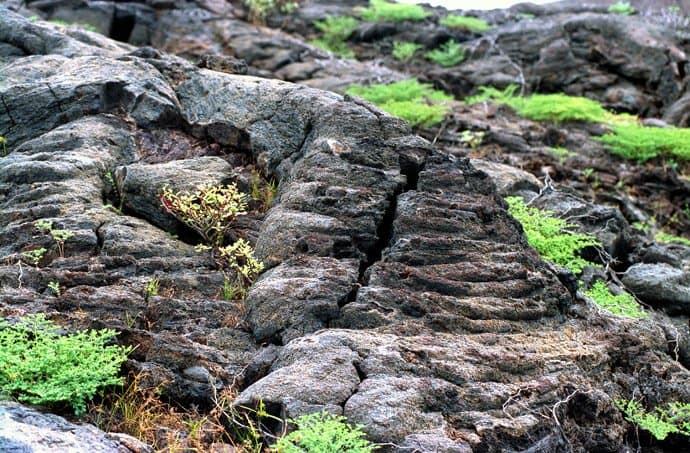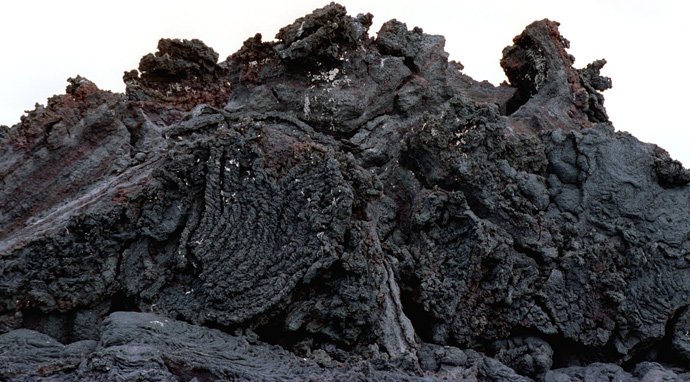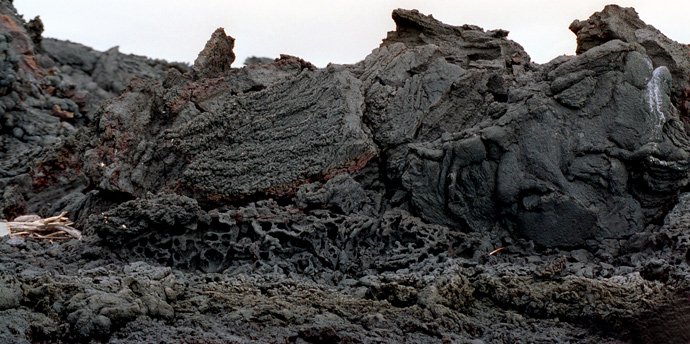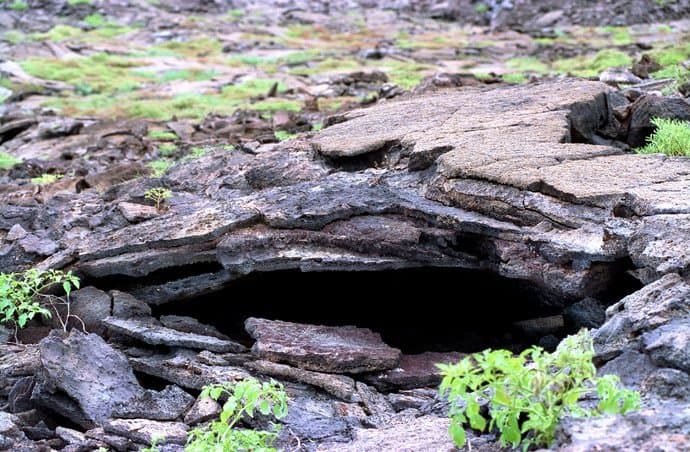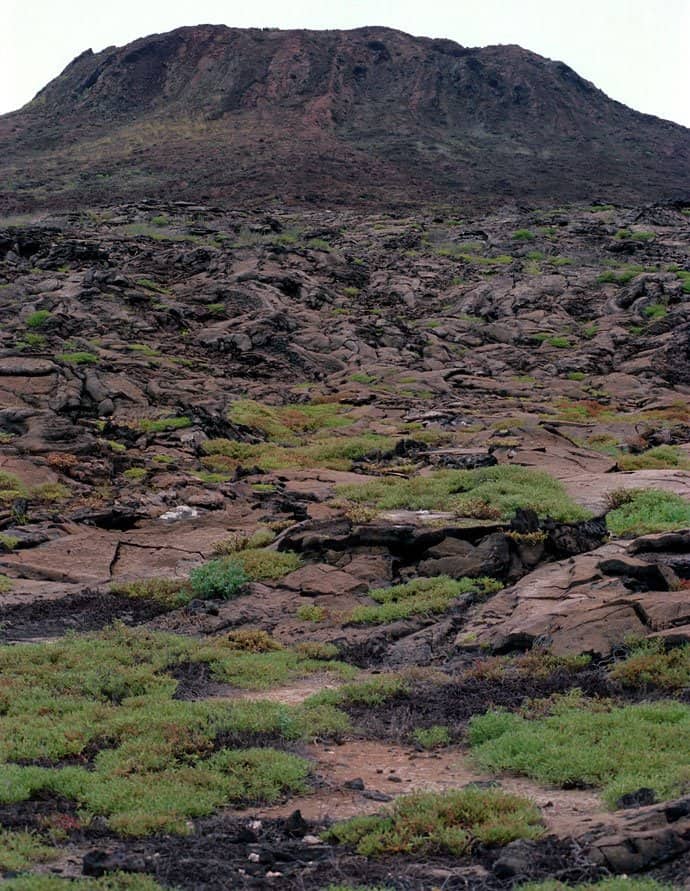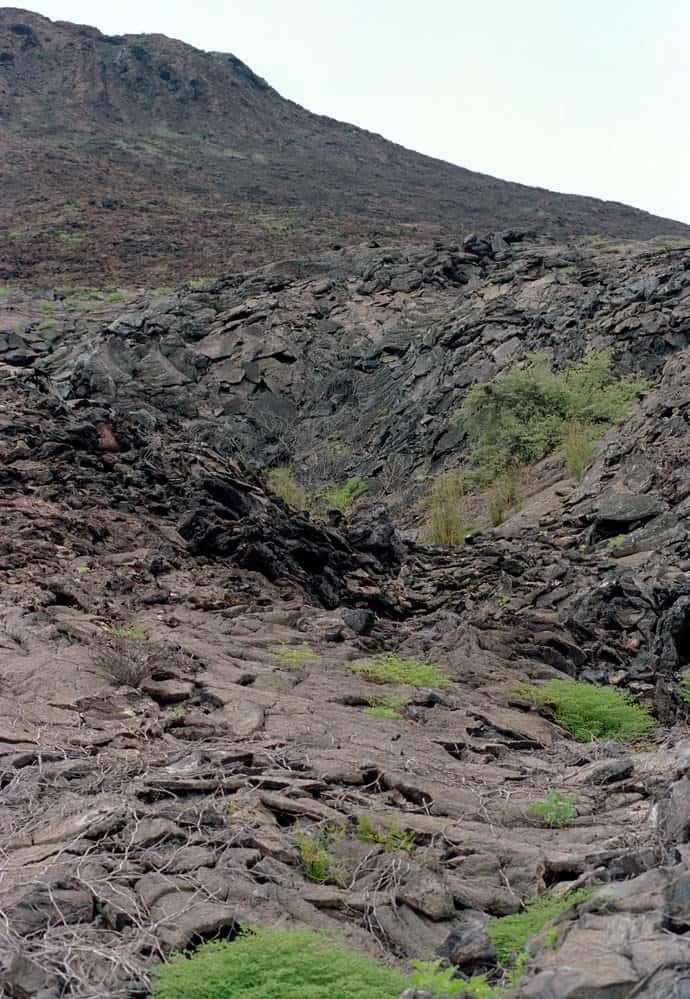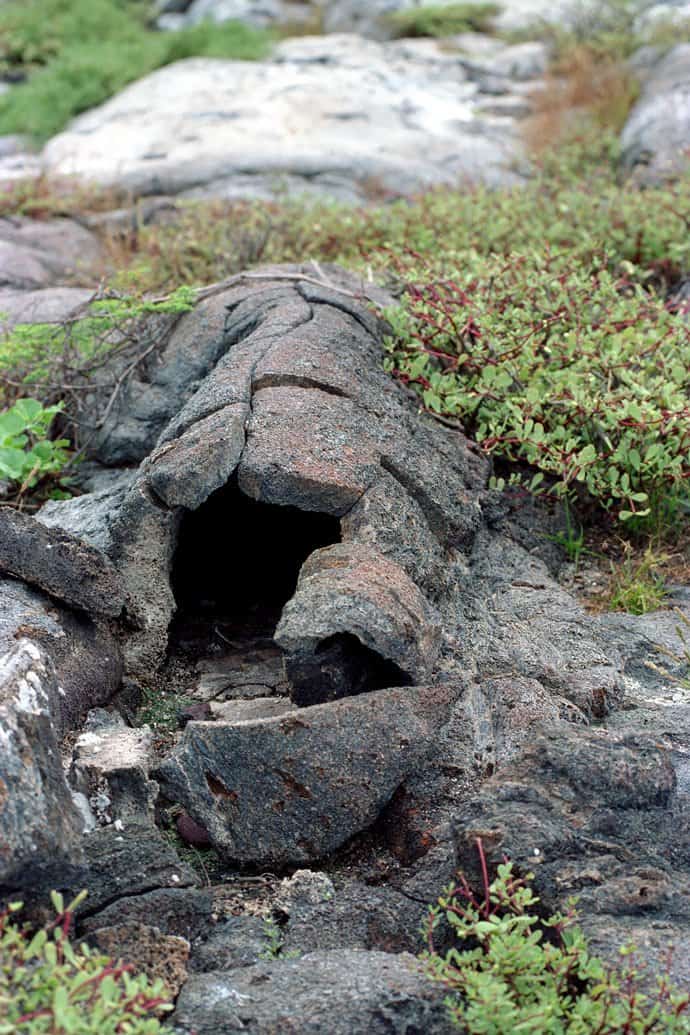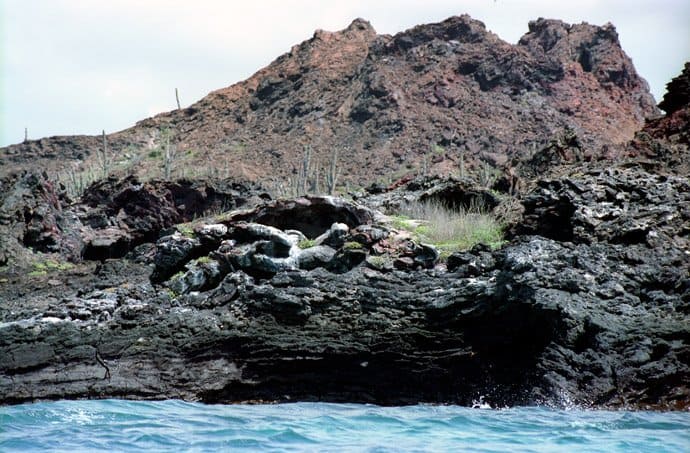Galapagos – Evolution I
The active volcanoes of the Galápagos Islands are oceanic shield volcanoes, which are initially built by basalt magma undersea. By constantly occurring lava flows forms a layered rather flat cone, which rises steeply only at its highest point and culminates in a so-called caldera (Spanish: boiler), a circular crater-like depression, which is formed by sudden collapse of the crater floor in an emptied magma chamber. The largest caldera can be found on Isabela, it has a diameter of 10×8 km.
Typical lava structures in Galápagos are the fresh black Pahoehoelava (Pahoehoe = Polinesian: rope), also known as knitted lava and the gray or red Aalava (A’a = Polish: pain) also known as block lava. Pahoehoelava is made of very thin basalt lava, which cools on the surface through the air and only solidifies a very thin film. The underneath liquid lava moves on and folds the surface skin more and more and twisted until it is structurally similar to tons of juxtaposed and interwoven ropes.
Over a period of about 1 million years, small ashes and cinder cones are formed on the surface and in the caldera. Then begins the gradual erosion, during which it can still come to individual eruptions on the flanks of the shield volcanoes. The Aalava is created by slowly flowing lava, which quickly cools down a thicker layer, which then breaks into sharp-edged floes. They are transported by the flowing lava below and piled up at the end of the lava flow.
The thin and slowly cooling lava often forms so-called lava tubes, which arise from the fact that under the solidified surface skin, the inner liquid lava continues to flow, gradually dried up and leaves elongated cavities often miles long. Such a large and walkable lava tube can be seen on Santa Cruz. In volcanically active areas, earthquakes and tectonic movements occur again and again, caused by magma movements in the depths. They sometimes cause uplift that elevates undersea formed lava rocks with fossiliferous strata above sea level. This phenomenon can be found on Isabela (Urbina Bay) and San Cristóbal and is responsible for the creation of some islands, such as Baltra and Española, which were not created from volcanoes, but from submarine lavas, which were lifted by tectonic movements.
Galapagos – extinct lava of an explosion crater
Over a period of up to 10 million years, the surface weathered more and more and gradually submerged in the water by the drifting on the Nazca plate, which decreases more and more towards the mainland.

